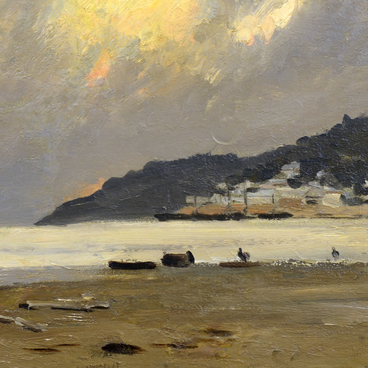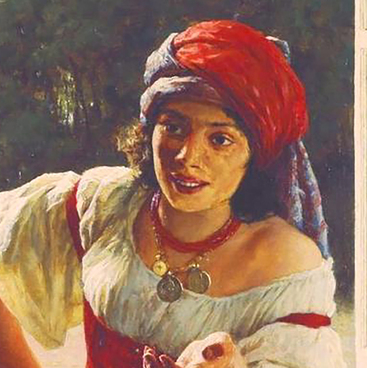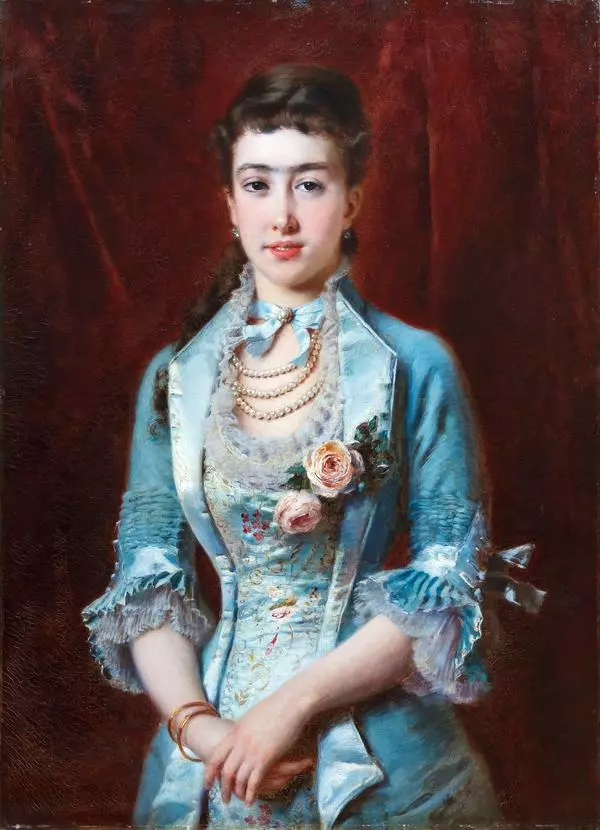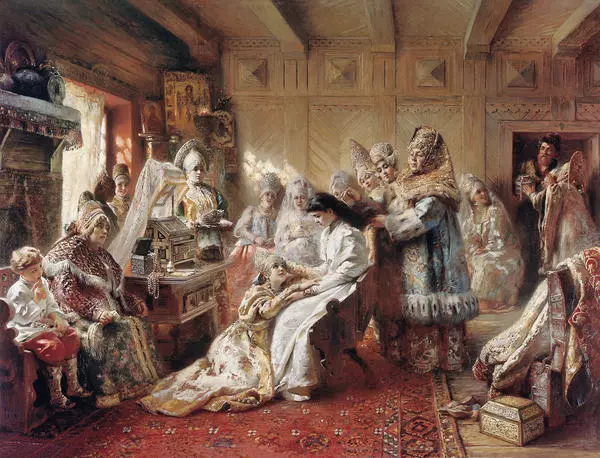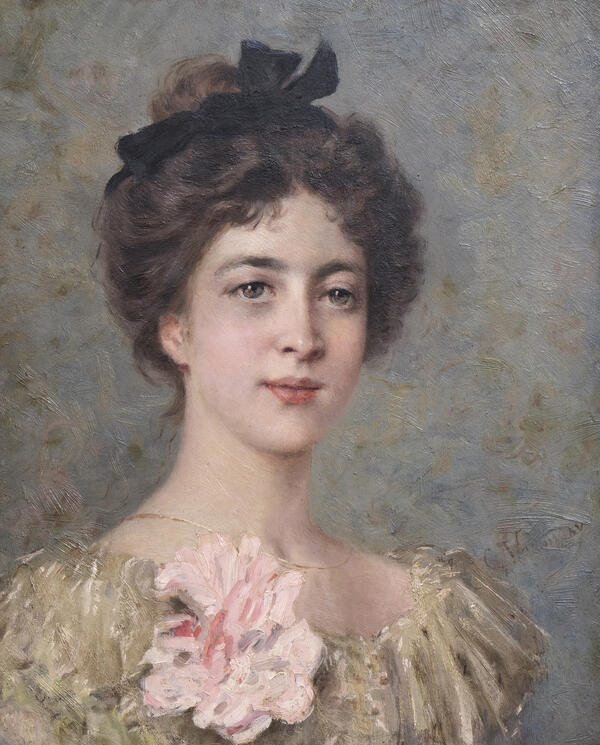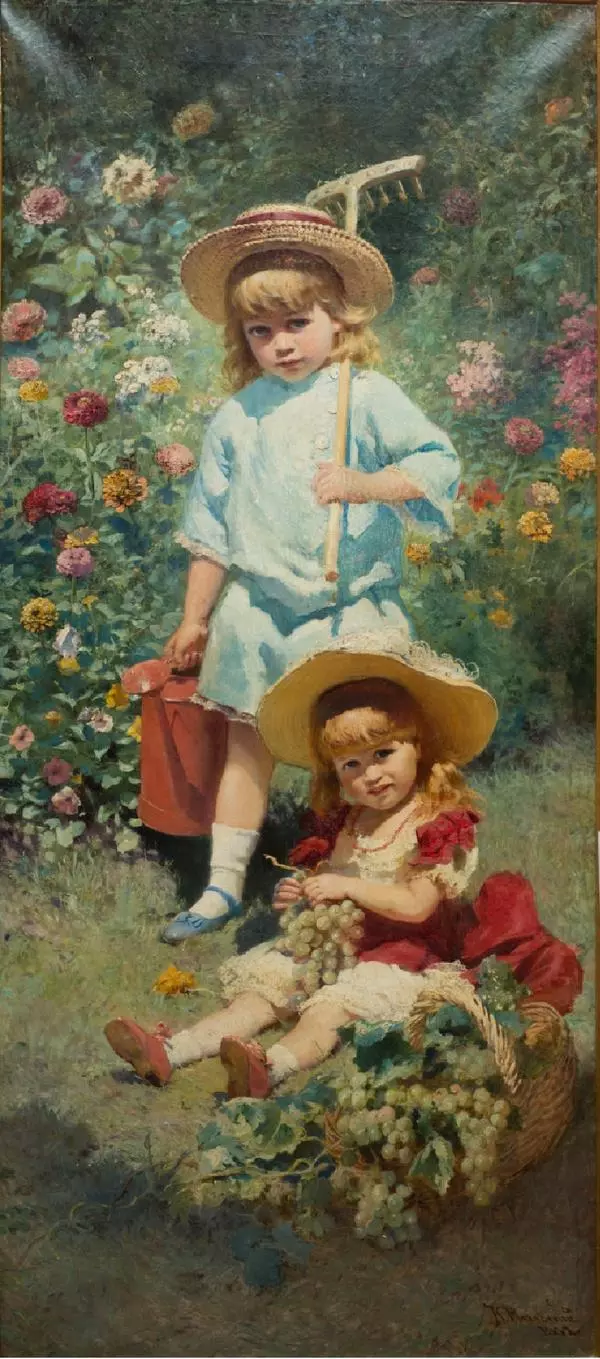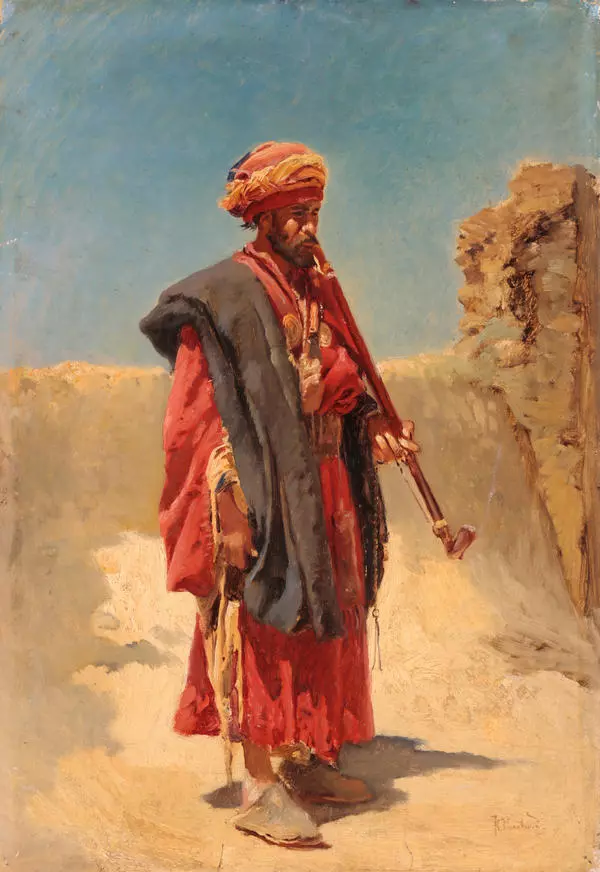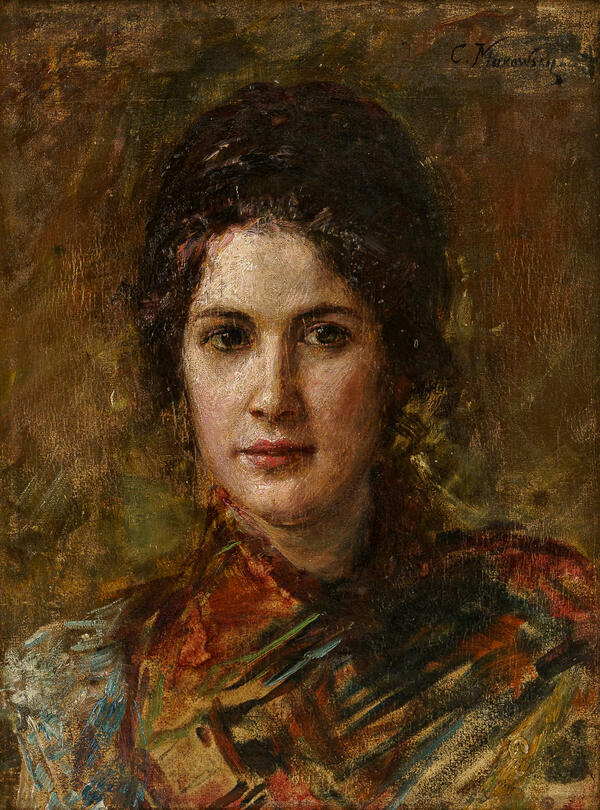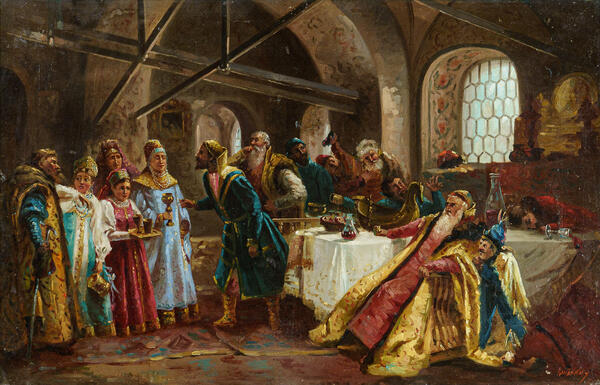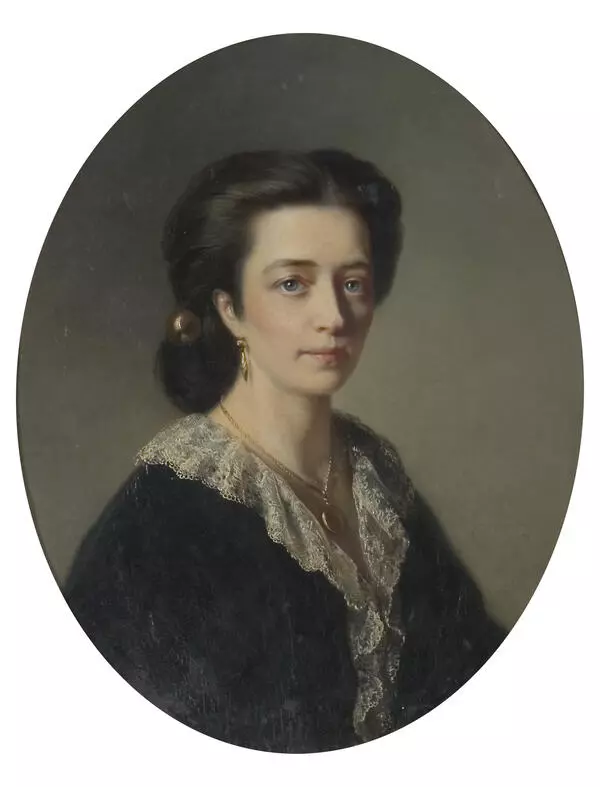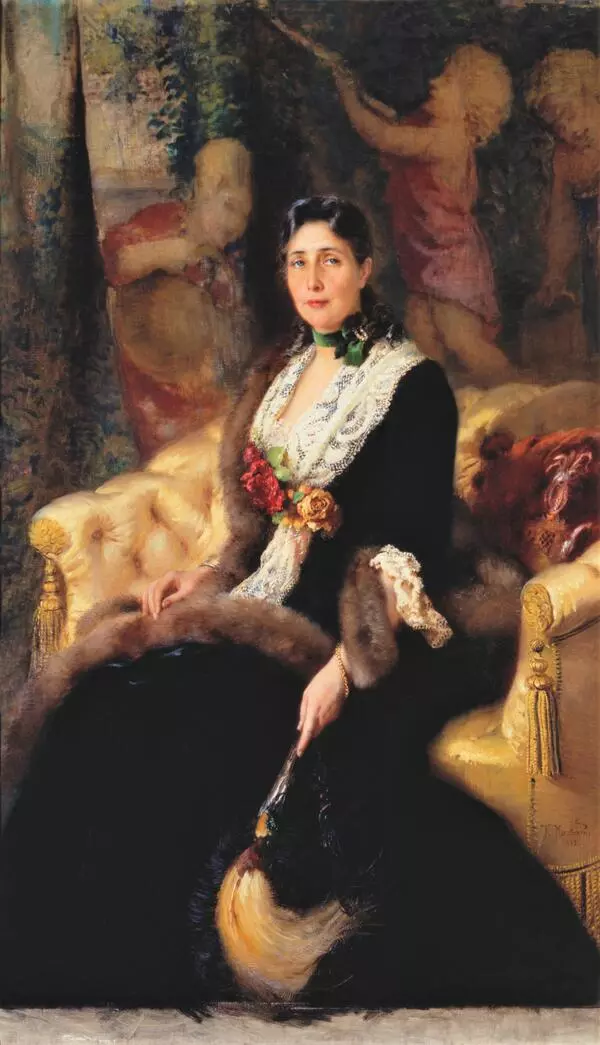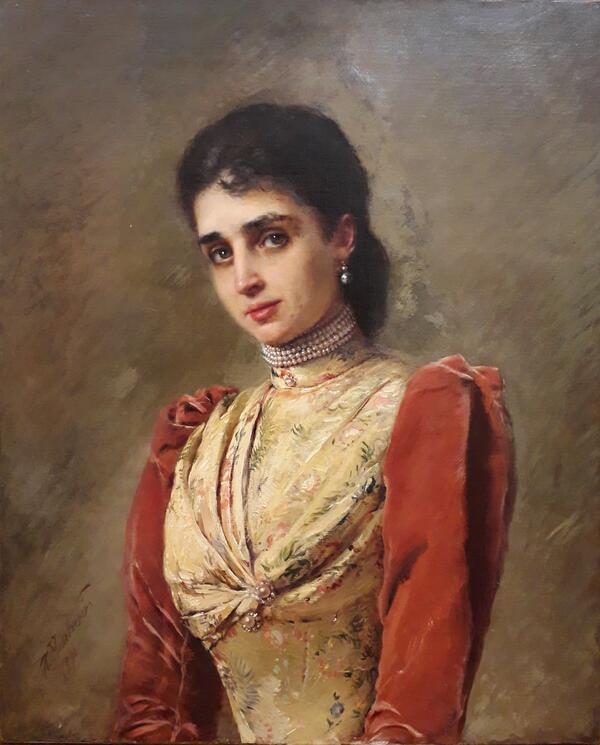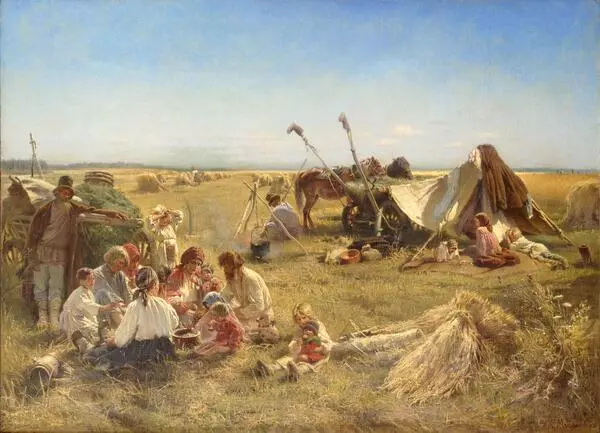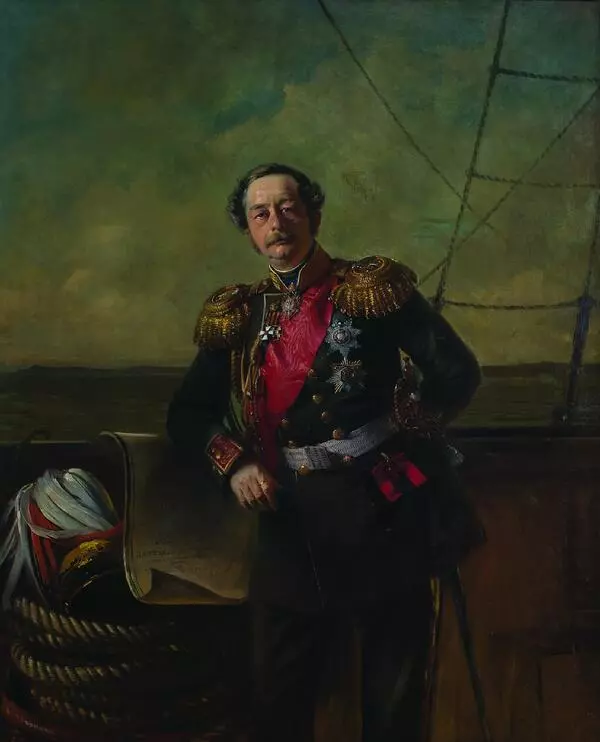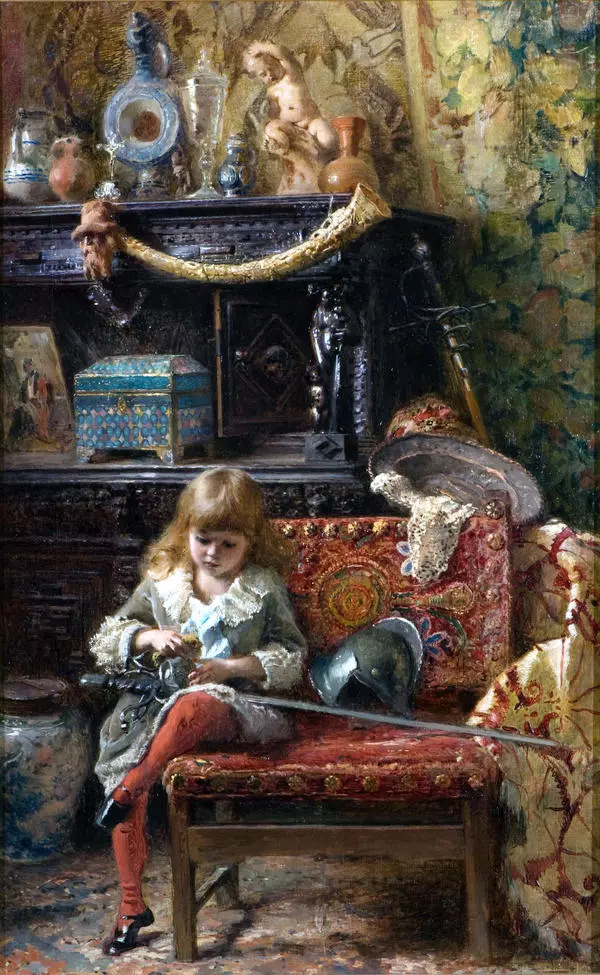Konstantin Makovsky is a Russian painter from a family endowed with creative talents. His father, Egor Makovsky, was a prominent arts worker and one of the founders of Moscow school of painting, sculpture and architecture. Sister Alexandra and two brothers, Vladimir and Nikolay, became artists. The second sister Mary followed a career as a singer.
Vasily Tropinin and Silvester Schedrin had an impact on shaping the style of Konstantin Makovsky in his youth.
Being a student in the Emperor’s Academy of Arts he participated in the renowned “Revolt of the 14” – an outrageous withdrawal of 14 top graduates of the Academy from the participation in the contest for a big golden medal hosted for the centenary of the educational establishment.
Initially, Makovsky was incorporated as a member of Saint-Petersburg community of artists-democrats and adhered to acute social theme in his works.
Over the time the artist established links with the official authorities and gained a rank of academician followed by a rank of professor of the Academy of Arts for his works Herring Dealer Woman dated 1867 and Pre-Lenten Fast festivities on Admiralteyskaya Square dated 1869.
Later in life, he eventually anchored himself as a salon maestro with a certain circle of both favorite topics and well-tuned techniques.
For the first time Konstantin Makovsky visited Egypt in 1872 with his wife, actress Elena Burkova. The main purpose of this trip was to restore health of his wife, however, the climate change didn’t help and she died in 1873.
The artist returned to Africa two more times. As a result of these trips, he painted a whole series of landscapes with views of Egypt and genre scenes, the action in which takes place in the streets of Cairo. His portrait sketches depicting Egyptians are marked with high picturesque merits and lyrical interpretation of images.
In the Russian art of 1870s, Makovsky created a new oriental trend based upon oriental storylines. His famous canvas of that period Transfer of Sacred Carpet from Mecca to Cairo was acquired by Alexander III. Now it is kept with the collection of the Russian Museum in Saint-Petersburg.
‘Fascinating monotonous peace prevails In Cairo Coffee House. The space is filled with special light, subdued as compared to fairly bright radiance of the street. It pours through the lacings of the carved grate and in the corner and under the ceiling transforms into multicolored shadows and permeable dusk. The stone oven-stove for cooking coffee is located immediately near the entrance to the coffee house, probably, to serve passer-by straight on the street. The minaret serves as a distinctive feature of oriental architecture.
Vasily Tropinin and Silvester Schedrin had an impact on shaping the style of Konstantin Makovsky in his youth.
Being a student in the Emperor’s Academy of Arts he participated in the renowned “Revolt of the 14” – an outrageous withdrawal of 14 top graduates of the Academy from the participation in the contest for a big golden medal hosted for the centenary of the educational establishment.
Initially, Makovsky was incorporated as a member of Saint-Petersburg community of artists-democrats and adhered to acute social theme in his works.
Over the time the artist established links with the official authorities and gained a rank of academician followed by a rank of professor of the Academy of Arts for his works Herring Dealer Woman dated 1867 and Pre-Lenten Fast festivities on Admiralteyskaya Square dated 1869.
Later in life, he eventually anchored himself as a salon maestro with a certain circle of both favorite topics and well-tuned techniques.
For the first time Konstantin Makovsky visited Egypt in 1872 with his wife, actress Elena Burkova. The main purpose of this trip was to restore health of his wife, however, the climate change didn’t help and she died in 1873.
The artist returned to Africa two more times. As a result of these trips, he painted a whole series of landscapes with views of Egypt and genre scenes, the action in which takes place in the streets of Cairo. His portrait sketches depicting Egyptians are marked with high picturesque merits and lyrical interpretation of images.
In the Russian art of 1870s, Makovsky created a new oriental trend based upon oriental storylines. His famous canvas of that period Transfer of Sacred Carpet from Mecca to Cairo was acquired by Alexander III. Now it is kept with the collection of the Russian Museum in Saint-Petersburg.
‘Fascinating monotonous peace prevails In Cairo Coffee House. The space is filled with special light, subdued as compared to fairly bright radiance of the street. It pours through the lacings of the carved grate and in the corner and under the ceiling transforms into multicolored shadows and permeable dusk. The stone oven-stove for cooking coffee is located immediately near the entrance to the coffee house, probably, to serve passer-by straight on the street. The minaret serves as a distinctive feature of oriental architecture.


